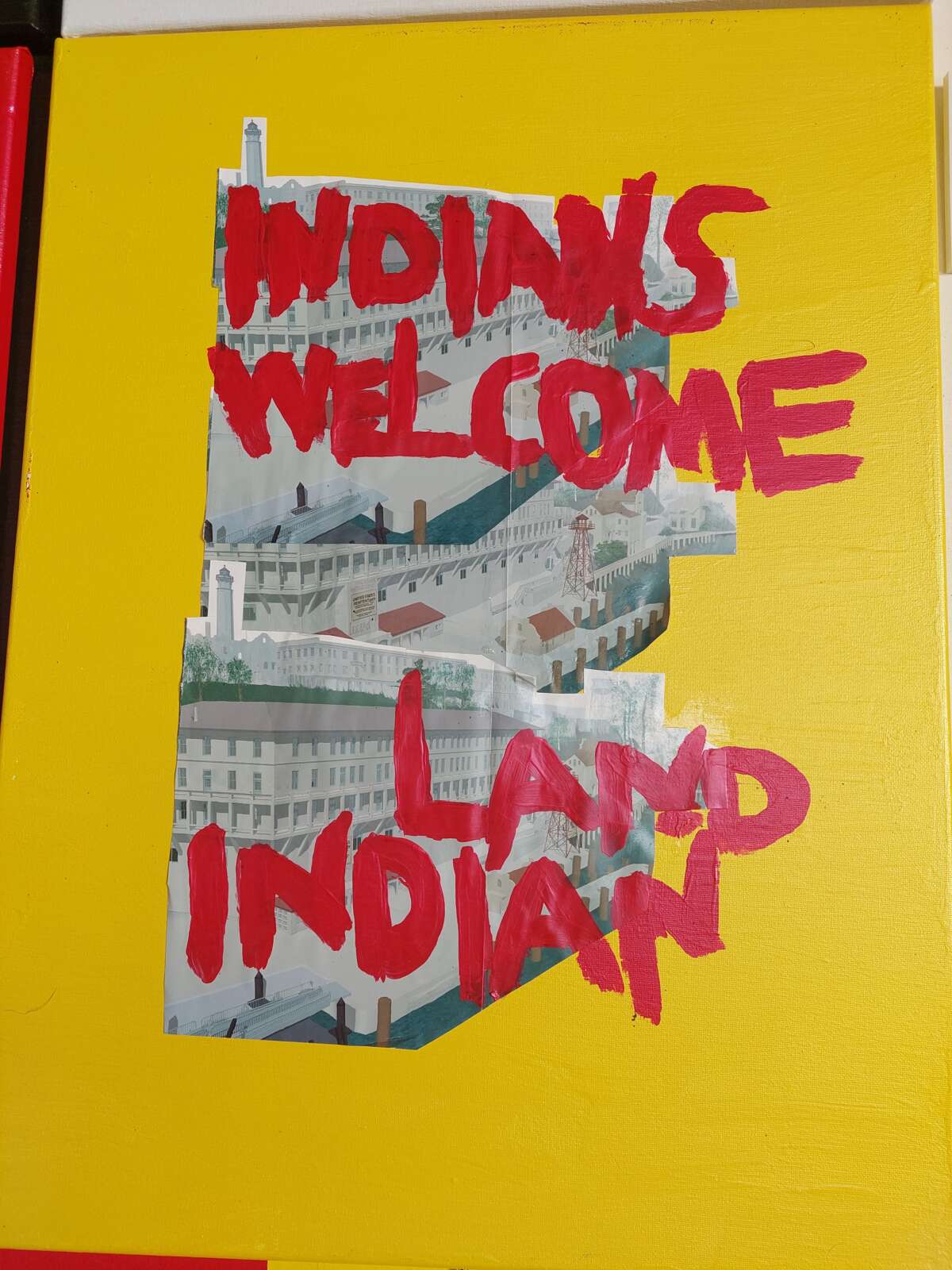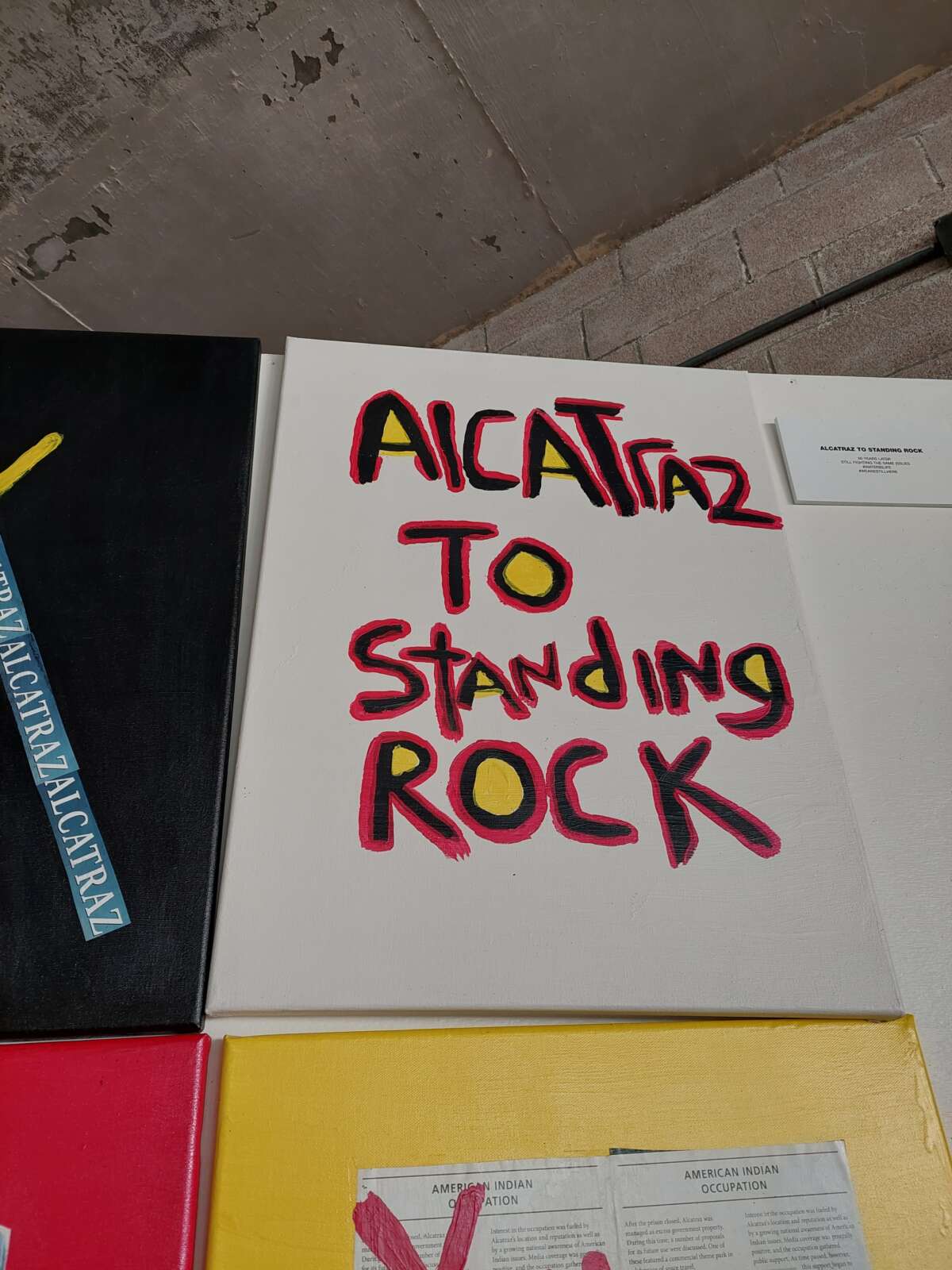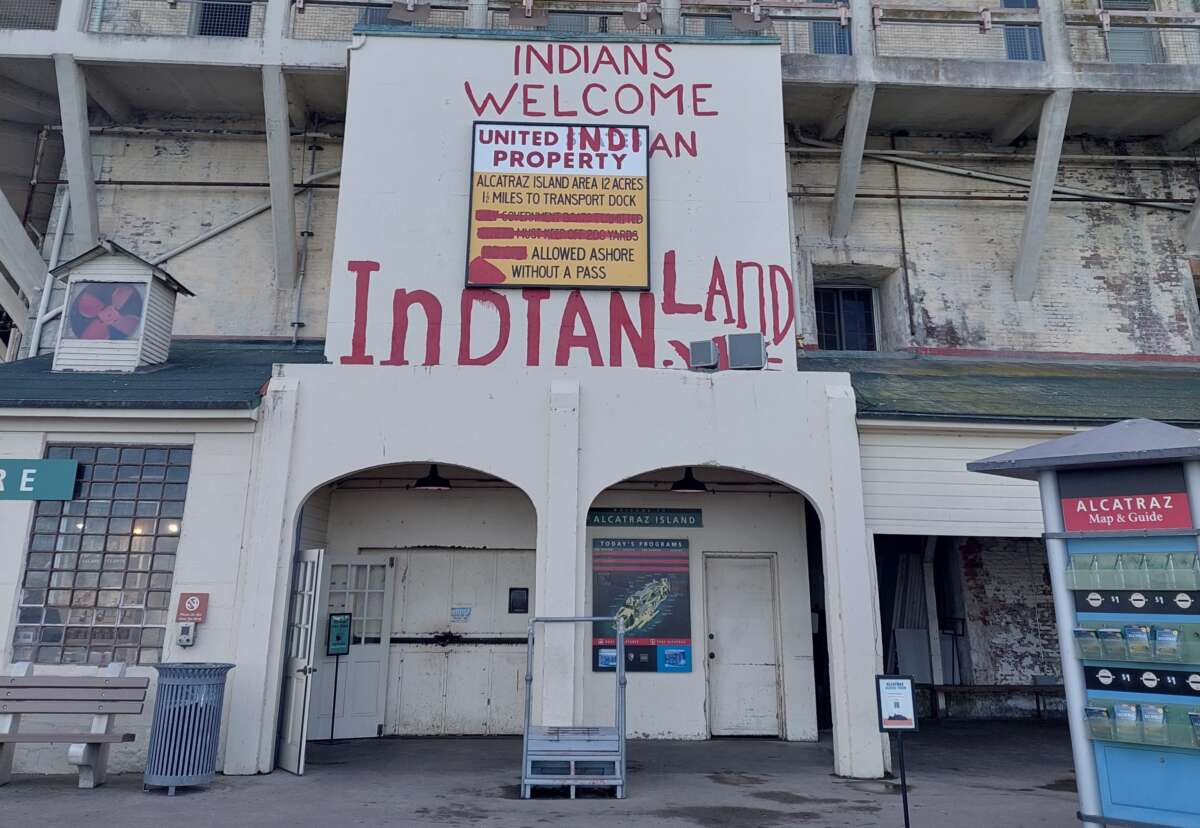For many Americans, Thanksgiving is a time to gather with loved ones, share a meal, watch football and express gratitude. Some Native Americans celebrate Thanksgiving this way as well, because feasting is Indigenous — we also love eating and watching football.
Still, the holiday carries a much heavier weight: It is a stark reminder of the violent colonization that began with the arrival of European settlers. The idyllic myths surrounding Thanksgiving align with broader strategies of historical revisionism used to justify settler colonialism by distorting and erasing histories of violence, exploitation and resistance. They reinforce settler identity and national pride and discourage critical engagement in our complex histories. These strategies serve to normalize colonization, valorize settlers and silence Indigenous voices.
Yet, even in the shadow of these painful histories, Native communities have found ways to challenge the sanitized myths of Thanksgiving and call for a reckoning with the true history of the United States, encouraging reflection, accountability and action to support Indigenous rights and justice. At the same time, the holiday serves as an opportunity to reclaim whitewashed narratives and assert Indigenous presence, reminding the world of the unbroken spirit of Native nations.

In November 1969, a group of young Native activists, who became known as “Indians of All Tribes,” sought to draw attention to the federal government’s failure to honor treaties, the dire conditions on reservations, and the systemic erasure of Indigenous cultures by occupying Alcatraz Island after a fire destroyed the American Indian Center in San Francisco. From November 20, 1969, to June 11, 1971, activists took control of the island, citing the Treaty of Fort Laramie (1868), which they argued gave them the right to claim unused federal land.
During their 19-month occupation, they transformed Alcatraz into a symbolic space of resistance, using it as a platform to advocate for sovereignty, education and cultural renewal. Though the protest ended when federal authorities forcibly removed the occupiers, it was a pivotal moment that reinvigorated the Indigenous rights movement.
In the spirit of the Alcatraz occupation, Unthanksgiving Day, also known as the Indigenous Peoples Sunrise Ceremony, has been organized by the International Indian Treaty Council and held annually on Alcatraz Island since 1975. The Unthanksgiving sunrise ceremony honors the legacy of the Natives who occupied Alcatraz and fosters solidarity among Natives and non-Natives. It serves as a celebration of Indigenous survival and the ongoing fight for justice.
Native communities have found ways to challenge the sanitized myths of Thanksgiving and call for a reckoning with the true history of the United States.
In 1970, while the occupation of Alcatraz was ongoing in San Francisco, across the country on the East Coast, the United American Indians of New England established the Day of Mourning. The Day of Mourning held every year in Plymouth, Massachusetts, includes a march through Plymouth’s historic district to Cole’s Hill, where invited speakers speak about Native histories and the struggles taking place in our communities and beyond. The event was conceived after Wamsutta, an Aquinnah Wampanoag leader, was invited to speak at the commemoration of the 350th anniversary of the arrival of the pilgrims in Plymouth, Massachusetts. After his planned speech — which criticized the glorification of the whitewashed Thanksgiving narrative and detailed the atrocities committed against Indigenous peoples — was censored, he and other Indigenous activists gathered to mark the first Day of Mourning.
One of the most poignant moments in the speech that Wamsutta had planned was a reminder of our humanity:
History wants us to believe that the Indian was a savage, illiterate, uncivilized animal. A history that was written by an organized, disciplined people, to expose us as an unorganized and undisciplined entity. Two distinctly different cultures met. One thought they must control life; the other believed life was to be enjoyed, because nature decreed it. Let us remember, the Indian is and was just as human as the white man. The Indian feels pain, gets hurt, and becomes defensive, has dreams, bears tragedy and failure, suffers from loneliness, needs to cry as well as laugh. He, too, is often misunderstood.
While the Day of Mourning acknowledges the historical injustices and mourns the loss of our ancestors, it is also a celebration of Indigenous survival, resilience and identity. Participants honor their ancestors through prayer and fasting while raising awareness about land sovereignty, environmental justice and the rights of Native people.
Indigenous peoples in the United States and Palestinians in Gaza have faced similar patterns of land dispossession and territorial fragmentation under settler-colonial systems.
The Day of Mourning also connects struggles faced by Indigenous peoples worldwide, highlighting the shared impacts of colonization and the need for collective resistance, which weighs heavily on Native communities as we bear witness to Israel’s war on Gaza.
Across continents and centuries, Indigenous peoples in the United States and Palestinians in Gaza have faced similar patterns of land dispossession and territorial fragmentation under settler-colonial systems. In the U.S., policies like the Indian Removal Act forcibly displaced Indigenous nations from their ancestral lands and pushed them onto reservations often located on economically and ecologically marginal terrain. The Dawes Act compounded this dispossession by fragmenting tribal territories and reducing Indigenous landholdings by millions of acres.
Likewise, Palestinians faced mass displacement during the Nakba in 1948, with thousands forced into refugee camps. This dispossession continues today through land confiscations and expansion of Israeli settlements in the West Bank. Meanwhile, Gaza remains isolated under a blockade that restricts movement and access, further severing Palestinians from their homelands.

Later.
The erosion of sovereignty has been a central tool of oppression for both Indigenous peoples in the United States and Palestinians in Gaza. In the U.S., federal policies undermined the rights of tribal nations to self-determination by replacing traditional governance systems with federal oversight and forcing assimilation through initiatives like the Indian boarding school system, which sought to eradicate Native identities and sever the connection of Native youth to their communities.
These efforts to subjugate Native communities are not confined to the past.
On October 27, 2016, about 200 police in riot gear, along with soldiers from the National Guard, carried out a midday raid on a protest encampment at Standing Rock, where Water Protectors had gathered to block construction of the Dakota Access Pipeline. Over 140 people were arrested on charges, including criminal trespassing, rioting and endangerment by fire, the last stemming from vehicles allegedly set ablaze during the confrontation. The militarized response exemplified the lengths to which authorities go to protect corporate interests over Native lives and environmental justice.
The myths of Thanksgiving perpetuate a sanitized narrative of harmony and gratitude that erases the violent historical and contemporary realities of settler colonialism.
Meanwhile, Palestinians in Gaza face severe restrictions on self-governance, with Israel exerting control over borders, airspace and access to essential resources. The Oslo Accords further fragmented Palestinian governance, fostering dependence on international aid while denying meaningful autonomy. Palestinians also encounter systemic efforts to crush resistance through militarized surveillance, airstrikes and blockades to maintain Israel’s hold on the region.
For Native peoples, the destruction and suffering in Gaza are hauntingly familiar because they mirror the aftermath of tragedies like the Massacre of Wounded Knee and violent police attacks on Water Protectors at Standing Rock. These shared experiences highlight the devastating consequences of colonizers wielding violence to suppress resistance. However, while these tragic circumstances remind us of our shared history of violence, they also remind us that our people have a shared spirit of resilience and survival.
It’s important to understand these histories and the parallels that exist because crimes against humanity have a strange way of becoming pillars of American exceptionalism, “necessary evils” for the sake of “progress” and “manifest destiny” that, over time, become mythologized and celebrated as holidays — see Columbus Day, Independence Day and Presidents’ Day. Thanksgiving is no exception. I dread the possibility that someday a similar holiday could be invented to reframe Israel’s war on Gaza as a benevolent and just occurrence that should be celebrated.
The myths of Thanksgiving perpetuate a sanitized narrative of harmony and gratitude that erases the violent historical and contemporary realities of settler colonialism. By glorifying the arrival of European settlers and ignoring the intentional eradication and oppression of Indigenous peoples, Thanksgiving becomes less about gratitude and more of a tool for perpetuating historical erasure and distraction, further marginalizing Indigenous voices and struggles.
As Thanksgiving myths continue to shape public consciousness, there is a pressing need to disrupt those narratives and center the voices of those who have been silenced. By addressing the uncensored history of colonization and its ongoing impacts, we can encourage action toward Indigenous sovereignty, environmental justice and human rights on a global scale.
Thanksgiving, filtered through a Native lens of truth and resistance, can become a moment of reckoning — a time to give thanks for our survival, resistance and commitment to dismantling the structures of oppression that have persisted for centuries.
Our most important fundraising appeal of the year
December is the most critical time of year for Truthout, because our nonprofit news is funded almost entirely by individual donations from readers like you. So before you navigate away, we ask that you take just a second to support Truthout with a tax-deductible donation.
This year is a little different. We are up against a far-reaching, wide-scale attack on press freedom coming from the Trump administration. 2025 was a year of frightening censorship, news industry corporate consolidation, and worsening financial conditions for progressive nonprofits across the board.
We can only resist Trump’s agenda by cultivating a strong base of support. The right-wing mediasphere is funded comfortably by billionaire owners and venture capitalist philanthropists. At Truthout, we have you.
We’ve set an ambitious target for our year-end campaign — a goal of $250,000 to keep up our fight against authoritarianism in 2026. Please take a meaningful action in this fight: make a one-time or monthly donation to Truthout before December 31. If you have the means, please dig deep.
